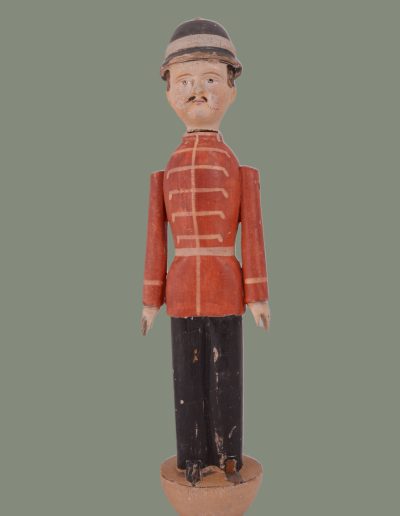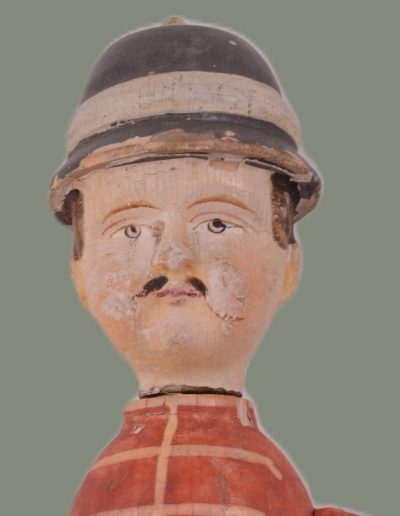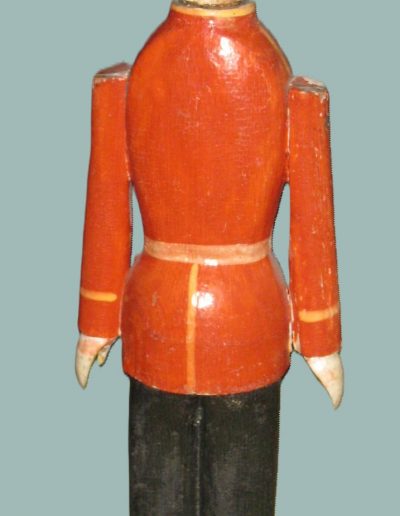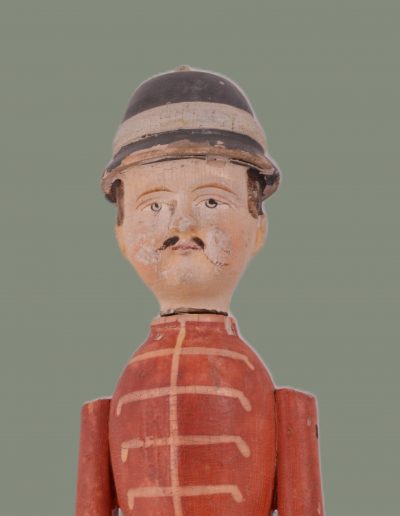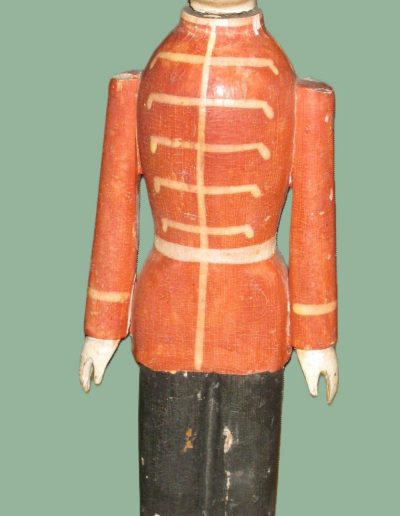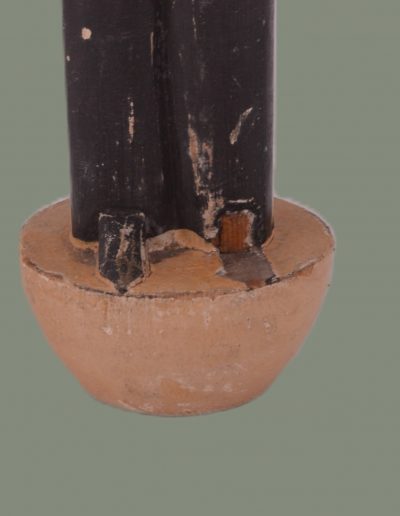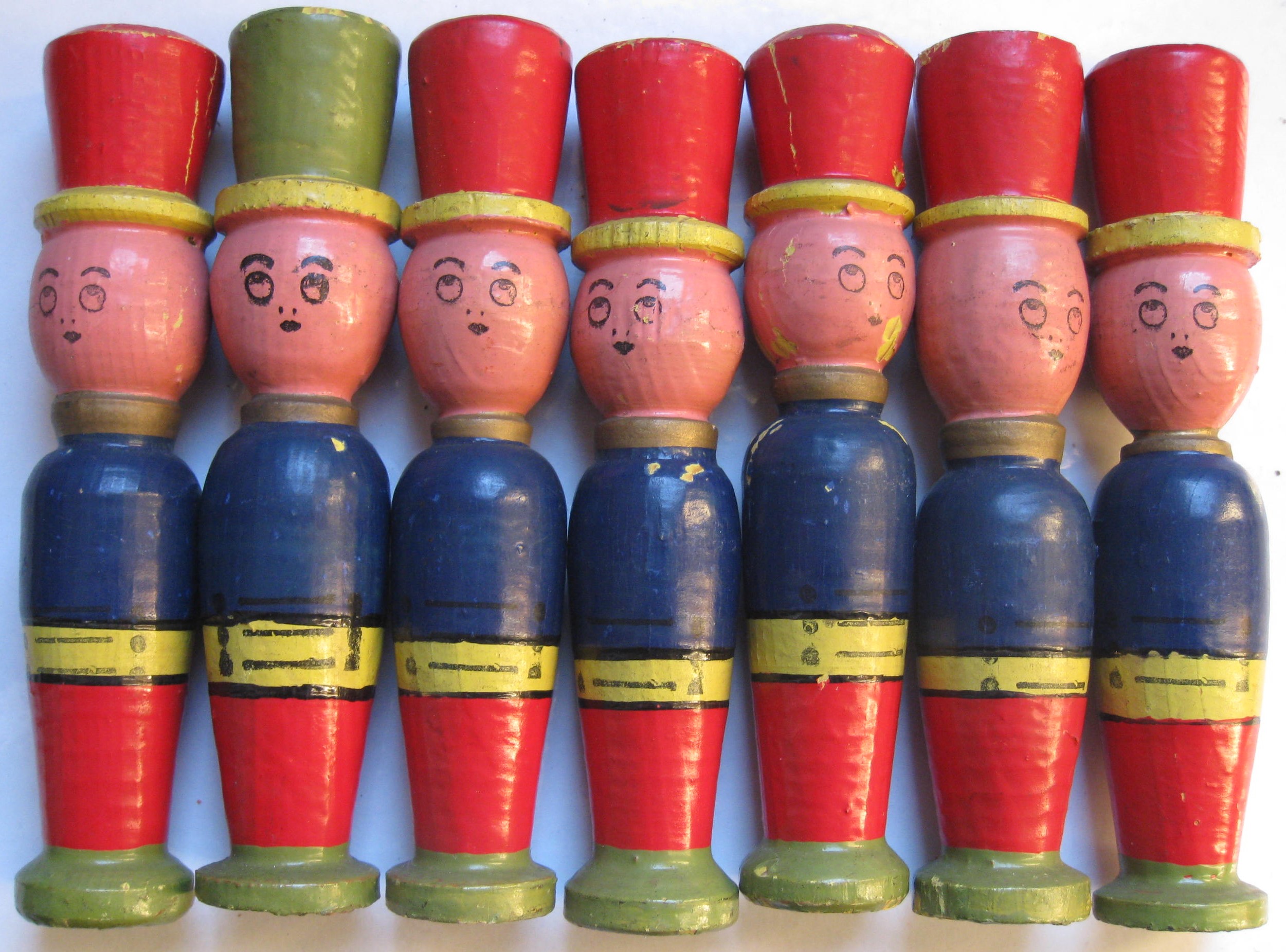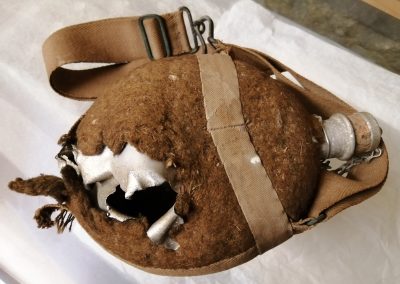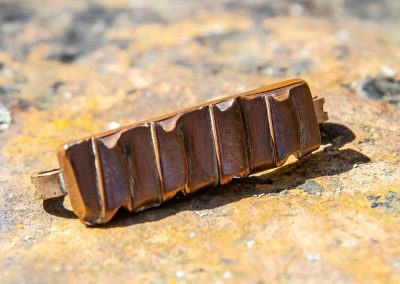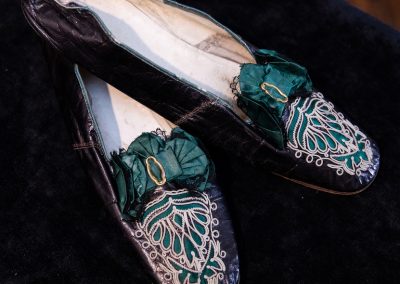Toy Soldier Skittles
Kiplin Hall and Gardens
This set of toy soldier skittles from Kiplin Hall and Gardens has been well played with. Can you see from the wear and tear? It has been common for toys for children, particularly those aimed at little boys, to be themed around military play at various times in history. The soldier skittles have all been painted in different examples of military uniform.
One is dressed in the recognisable red coat of the 19th century British infantryman. From 1902, this attire was only worn for parades and by the time of World War One, soldiers were in camouflage colours whilst on active service.
During the Victorian era, when these skittles were likely made, the British Empire was expanding and many children were taught to see military might as a source of national pride.
During World War One, toy manufacturers also increased production of war-themed toys including toy soldiers, with girls, in contrast, often encouraged to dress up and play as nurses.
The development of skittles
Skittles has been played for centuries, originally as an adult lawn game. It has developed more recently into pin bowling.
You can also see an example of a 20th century set of Skittles from Kiplin Hall and Gardens, alongside the taller soldiers. This set has been made by a more simple wood-turning technique and the skittles are much more similar to each other. Any individual characteristics are as a result of being hand-made and painted. This set of skittles is much smaller than the previous one. Why do you think one might have a different colour hat?
Activity – help your students explore the toy soldier as a mystery object. Can they tell what it is from the clues?
Talking Points
Have you played skittles? Have you seen children’s skittles in different character designs?
The game has been around for centuries. Why do you think it has lasted?
Why do you think the soldier’s foot is damaged?
Which is your favourite skittle from the set?
How do you think this set of skittles could have helped children to learn about the role of the British Army?
Do you think any of your toys could end up in a museum collection? Which ones?
Nowadays, some parents don’t want their children playing with toys relating to war and violence, such as toy guns or soldiers. Can you understand their views?
Vocabulary
Infantry: a group of foot soldiers
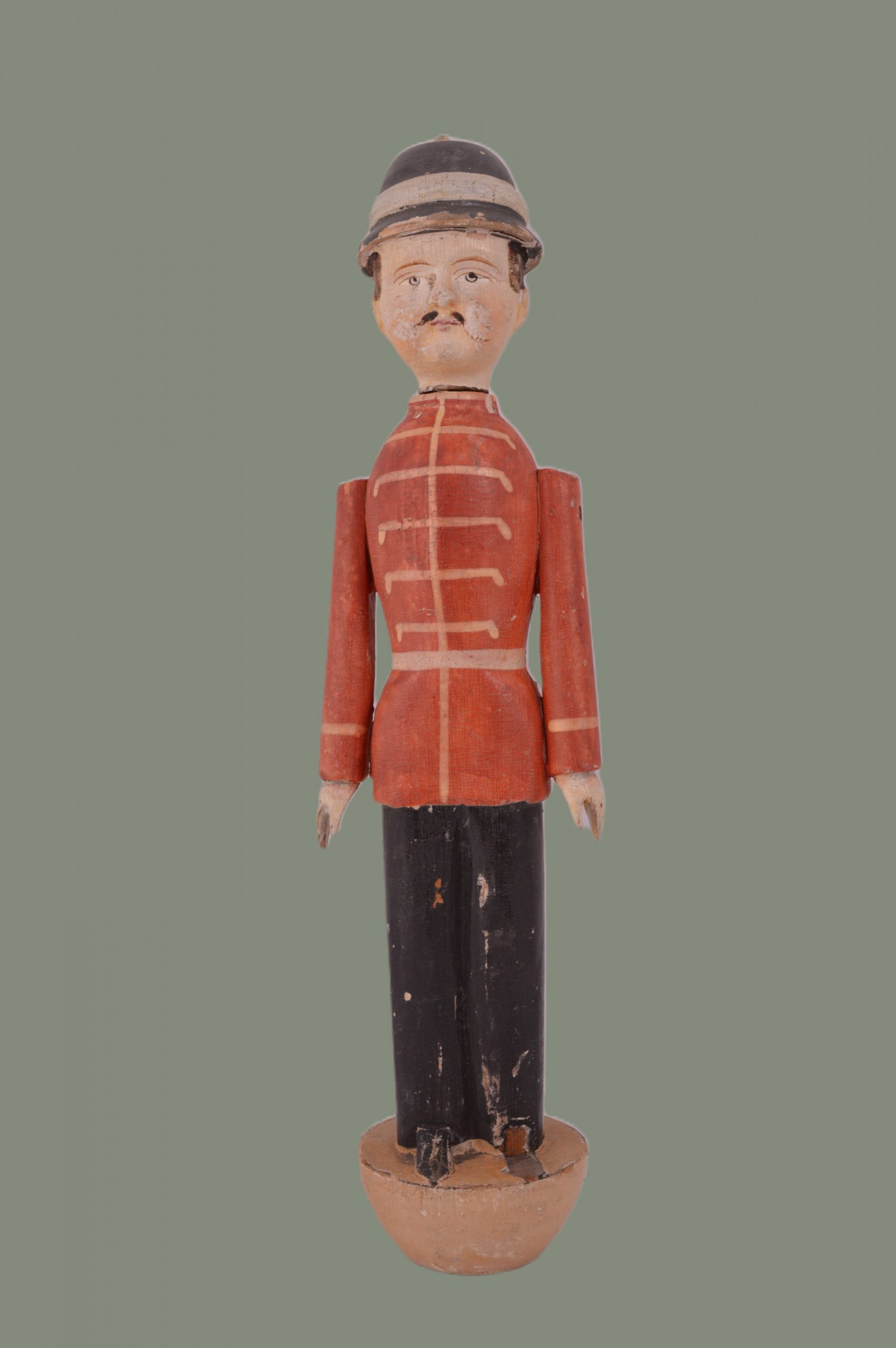
In the Classroom
Compare
Compare the 2 sets of skittles. Which do you think is oldest? Which set do you think was most expensive? Which would you prefer? Were you surprised by the different in size between the sets?
Hotseat
Interview a student in role as the adult who purchased this toy. Who do you think they bought it for? Do you think they were asked for it or was it a surprise present?
Hands on History
Discover more about Kiplin Hall and Gardens, or pay them a visit.
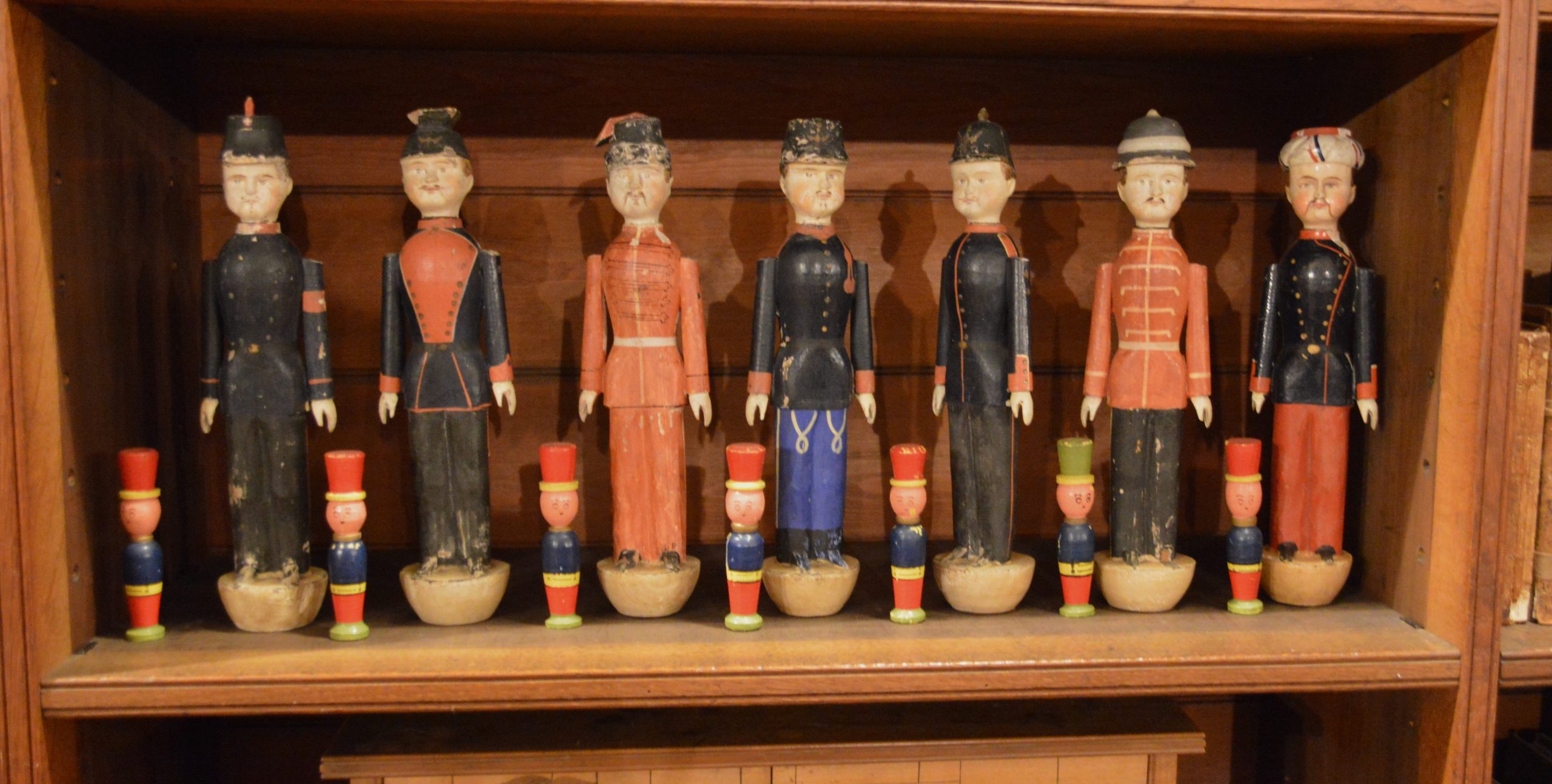
Museum Location

